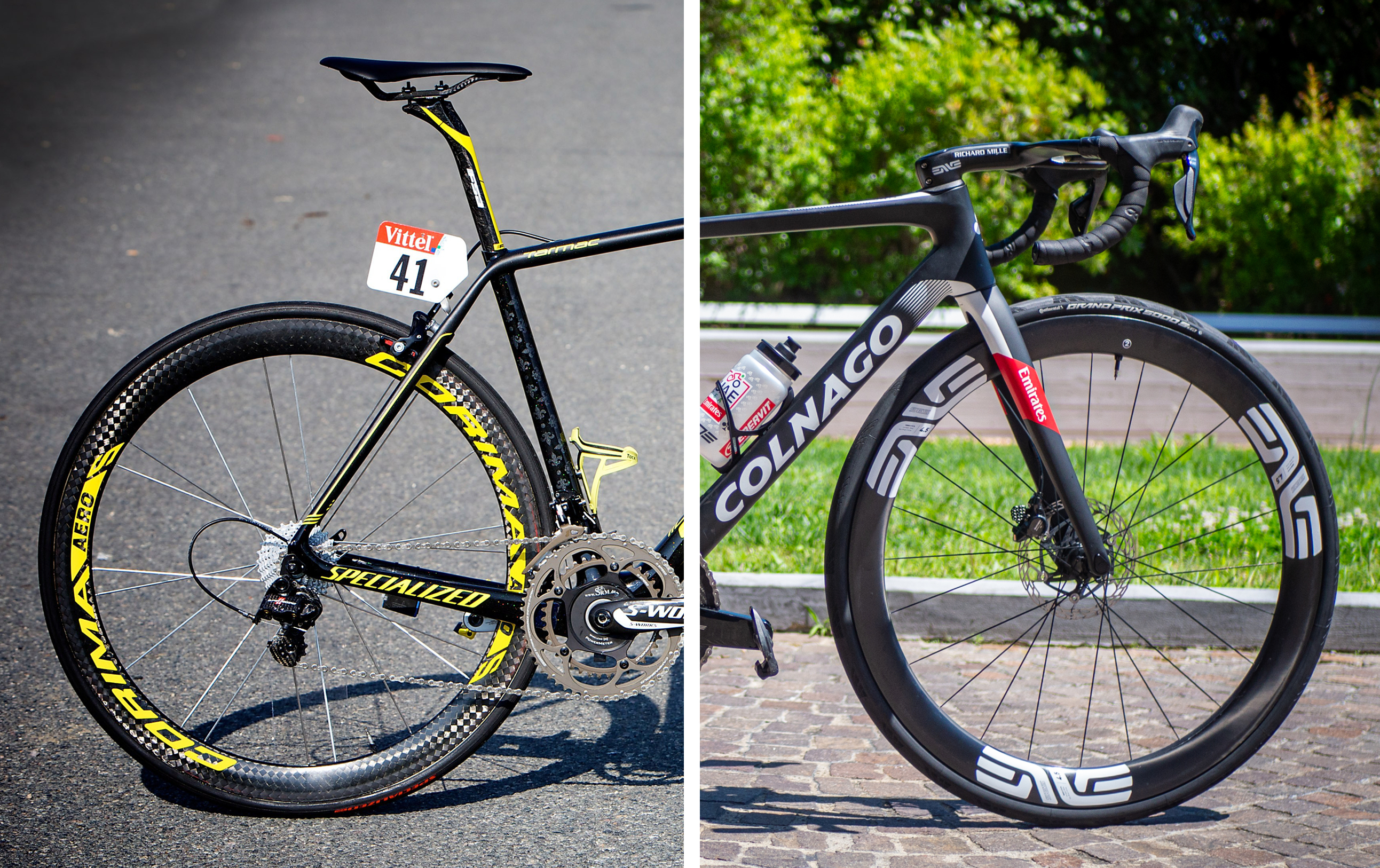
Back in 2014, we were treated to a Tour de France to remember for plenty of reasons both good and bad. The race made its Grand Départ from Leeds to Harrogate in the UK, which saw crowds akin to Alpe d’Huez flock to the roadside. Unfortunately, we also saw Mark Cavendish's hopes of any stage wins at that edition scuppered by a crash in the closing meters that sent him home with a separated shoulder.
Later in the race, we were treated to a spectacle as the race took to the rain-soaked cobbles of Northern France with the eventual overall winner Vincenzo Nibali going on the attack and taking minutes out of his rivals. It was also early on in this stage that the defending champion Chris Froome crashed out with a broken wrist.
Although some of the riders from the 2014 edition are still going strong in the WorldTour peloton, one thing that certainly has changed from a decade ago is Tour de France bikes.
It might not seem all that long ago but, since 2014, pro bike design has gone through multiple evolutions that position the modern race bike in a completely different class. In 2014, Nibali rode to victory on Specialized’s S-Works Tarmac SL5 fitted with rim brakes, a Campagnolo Super Record mechanical groupset, and shockingly narrow 22mm tubular tyres.
Nowadays you won’t find any of these things floating around the peloton so just what has changed?

Specialized S-Works Tarmac SL5 vs Colnago V4RS
Nibali’s Astana Pro team had the choice of either the Tarmac SL5, cobble-focussed Roubaix SL4, or the first-generation Venge aero bike. Even with this choice, Nibali exclusively rode the Tarmac, including on the testing cobbles of stage 5.
When the SL5 was released it was the first bike from Specialized to use its Rider First engineering technology. This saw each frame size get individual tube profiles with the aim of making each frame size have the same ride characteristics.
Fast forward to 2024 and the current yellow jersey holder Tadej Pogačar also uses a one-bike strategy. Colnago’s V4RS is Pogačar's do-it-all superbike only deviating for time trials.
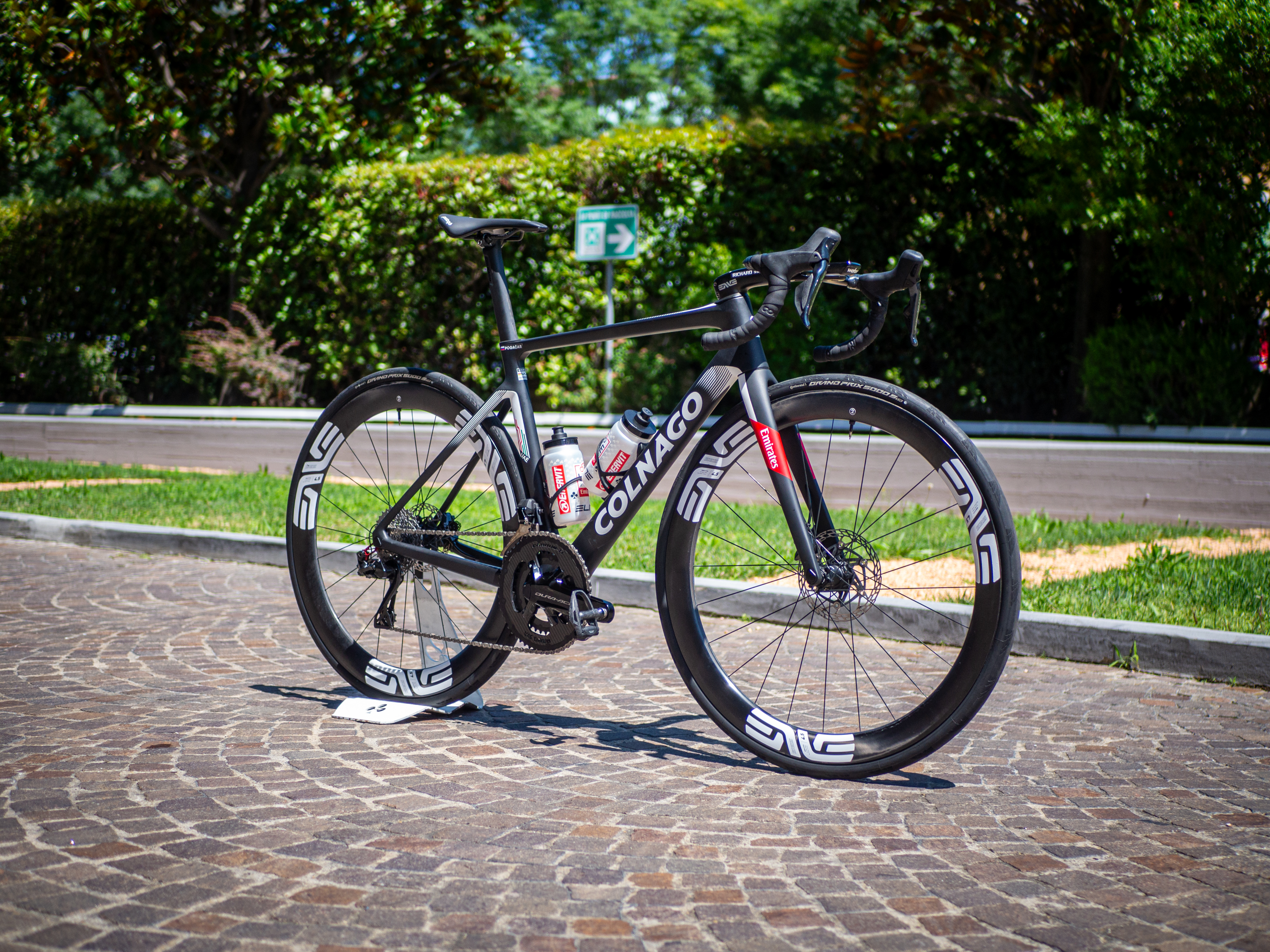
Although the V4RS doesn’t feature Rider First engineering what it does feature is aerodynamic optimisation. The tube profiles of the V4RS have been designed to cut through the oncoming air as efficiently as possible whilst retaining a lightweight climbing-friendly platform.
In 2014 the concept of aerodynamic optimisation was still a relatively new venture for road bike designers, with aero bikes and lightweight bikes sharing very little crossover. The SL5 had wide oval tube profiles that were stiff and light but far from aerodynamic (when Specialized released the Tarmac SL6 in 2017 it would bring aerodynamics to the fore of the Tarmac's design too).

Groupset and gear ratios
This is one of the areas that shows just how far bike tech has come in the past decade. In 2014, Nibali was running Campagnolo’s mechanical Super Record drivetrain with rim brakes. The 11-speed cassette is not too far from the 12-speed groupsets of modern pro bikes however the 11-27-tooth spread would leave even the best racers looking for more suitable climbing gear at this year's Tour de France.
When we got our hands on defending champion Jonas Vingegaard’s Cervélo R5 he had the widest SRAM Red AXS cassette possible fitted to his bike with the 10-36 12-speed cassette matched to a 52/39 chainset. This wider spread of gears ensures that even when the gradients exceed 10% riders can maintain their optimal cadence and efficiency.
Another step change between Nibali’s bike and Vingegaard’s is how the groupset is actuated. By 2014, Campagnolo had released its first version of Super Record EPS; its electronic shifting platform. Nibali, however, preferred the feel of a mechanical groupset with the traditional design relying on cables to control both the front and rear derailleurs.

Jumping back to the present day, Vingegaard's SRAM Red AXS equipped Cervélo is a completely wireless affair with shifting duties taken care of by an electronic servo remotely controlled by the shifters on the brake levers. Not only does electronic shifting allow for very fast, accurate and crisp shifting, but it also reduces the time mechanics need to spend on maintenance.
The final massive difference between the bikes is that Nibali’s SL5 relied on rim brakes when it came to putting on the anchors. Back in 2014, the WorldTour peloton was still four years away from having the use of disc brakes formally approved.
Many pros were more than happy on rim brakes. In fact, many still hark back to that time now, however, on a wet mountain descent the control and modulation disc brakes provide is certainly not something riders complain about.
2022 was the last Tour de France to be won on rim brakes and since then every team has used disc brake framesets. This and the move to wider tyres have been the most widely adopted tech changes in the past 10 years by the pro peloton.
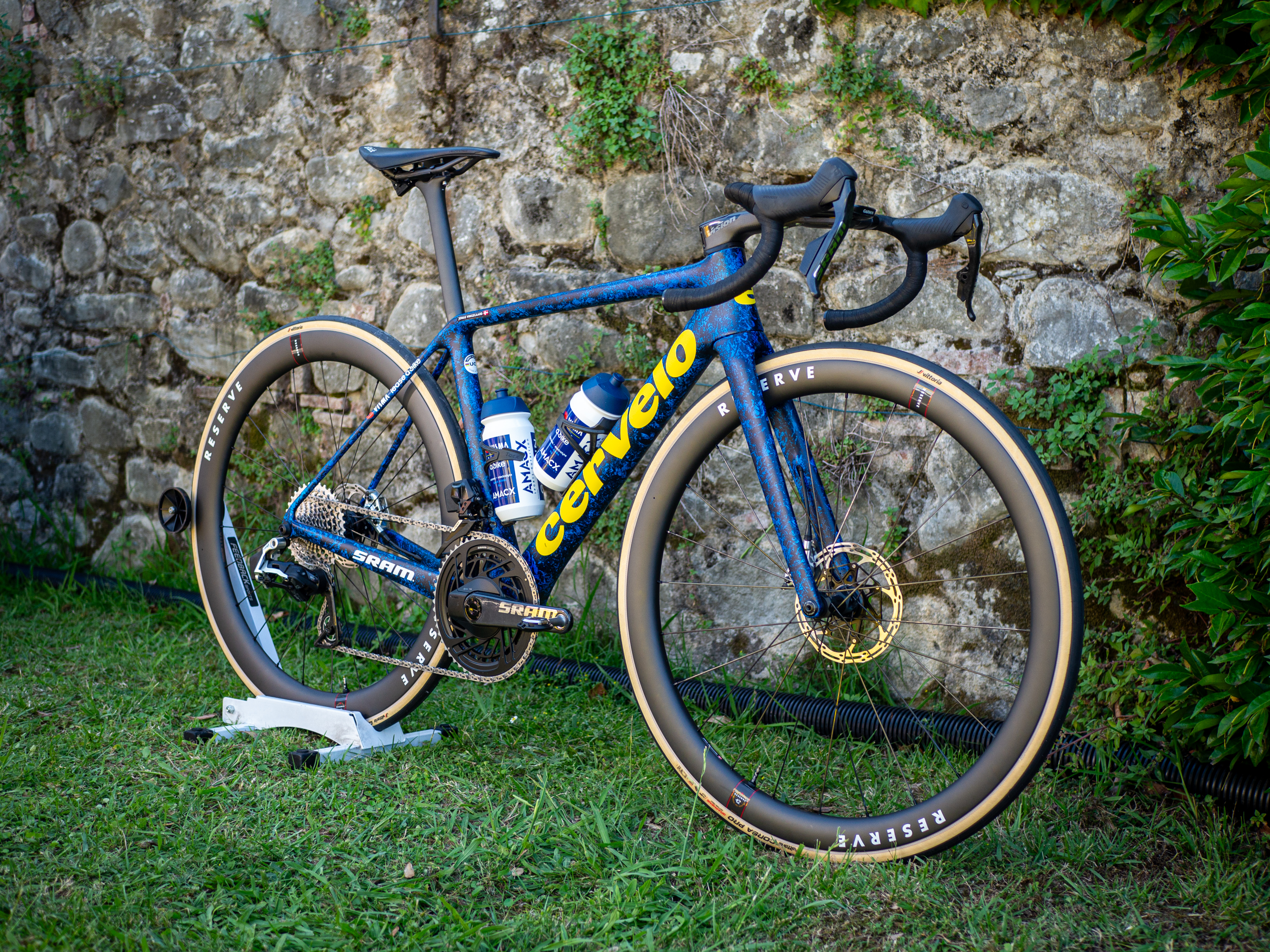

Tyres have got a whole lot wider
It is hard to believe just how far tyre technology has come in the past decade. In 2014 the peloton was slowly waking up to the idea that wider tyres might offer some performance benefits over skinny alternatives. One person who did not follow this trend in 2014 was a certain Vincenzo Nibali, whose Tour de France bike was fitted with 22mm tubular tyres.
Both tyres of that width and style have almost all been replaced, with just a few teams clinging onto tubular tyres. Instead, most teams are now running tubeless tyres that use a standard clincher style tyre but replace the inner tube with latex sealant. This hopefully prevents race-ending punctures with the sealant able to plug small cuts to the tyre on the fly. Tubeless tyres have also been shown to offer better rolling resistance than equivalent tubular tyres, presenting them as a marginal gain in rolling efficiency.

The 22mm tyre width Nibali used was already a little outdated even back in 2014, the majority of the peloton was on 23 or 25mm tyres with rim brake callipers limiting any riders wanting to go much wider than this.
In both the 2023 and 2024 editions of the Tour de France, Pogačar has exclusively used 30mm or wider Continental GP5000s TR tyres. The wider tyres offer an increase in rolling efficiency, better grip, and great puncture protection. With new wide-rimmed deep-section aero wheels, they are also more aerodynamic.
Pogačar is somewhat of a trailblazer using 30mm tyres, as most of the peloton run 28mm tyres as the standard; a width that was rare even to find on the cobbles of Paris-Roubaix back in 2014.
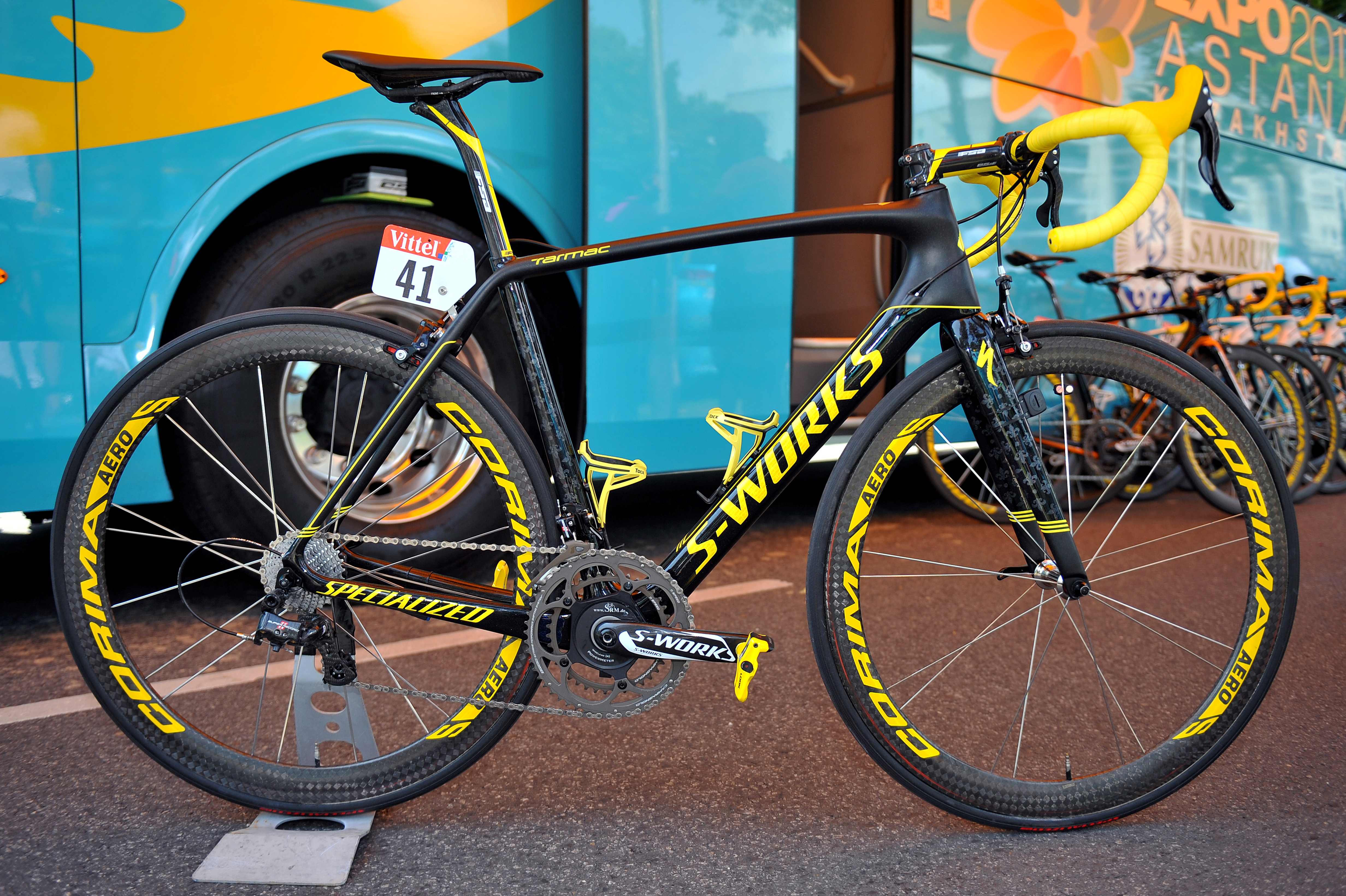
No GPS for Nibali
Something that would look out of place on even a budding amateur's bike nowadays is the speed sensor and magnet zip-tied to the fork of the bike. SRM was the choice of the peloton when it came to power meters with the head unit doing without GPS. The speed sensor sits rather abruptly at the front of the bike pointing inwards towards the spokes; something of an aerodynamic nightmare by modern standards.
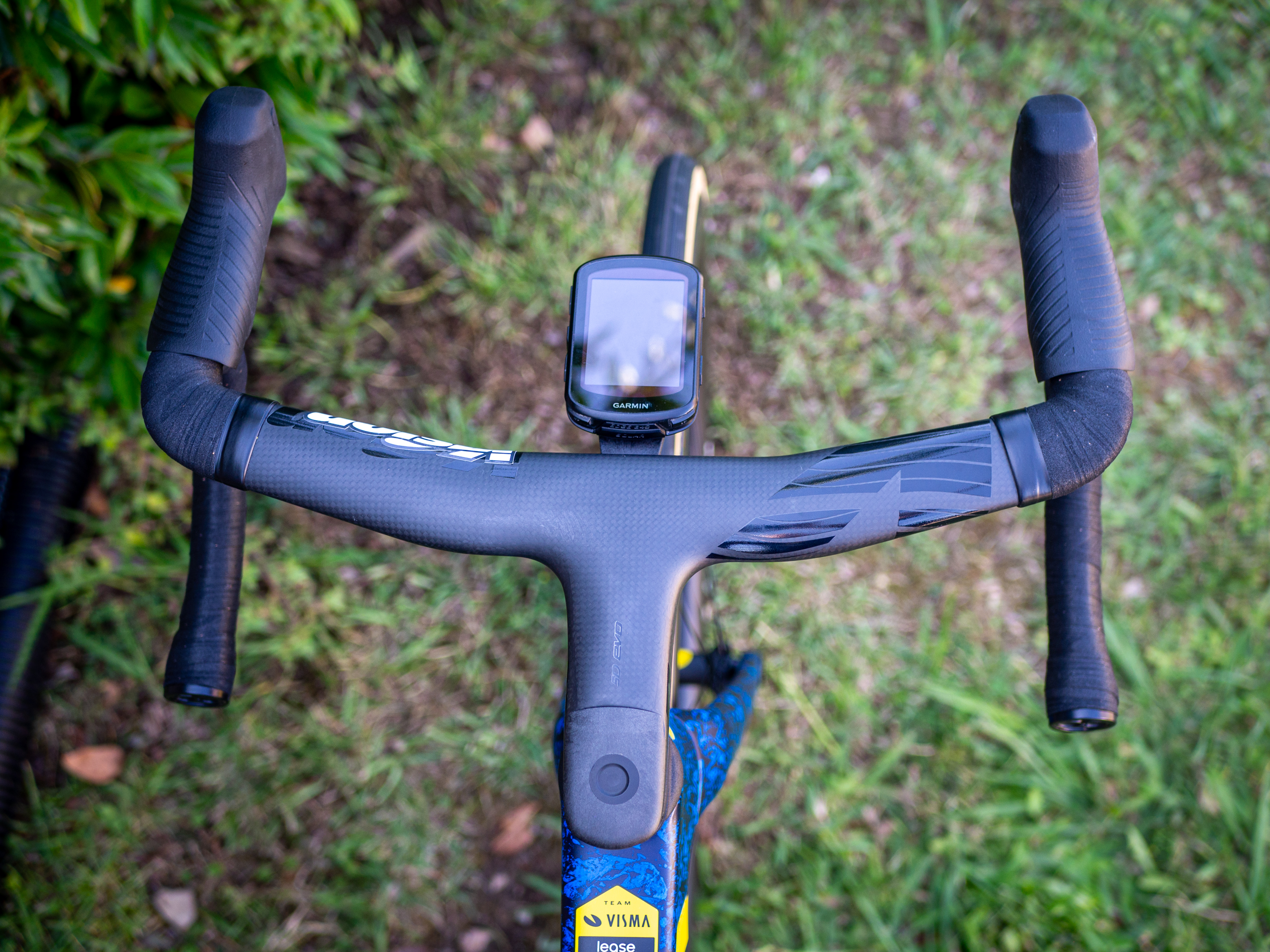
Modern race bikes have not totally done away with bulky add-ons, with the race timing transponders sitting on the fork legs often covered with a section of latex inner tube to smooth things over. As far as head units are concerned, the GPS revolution has swept across the entire peloton and with it killed off the need for any physical speed sensors.

Bars are narrowing, and lever position is on the move
An emerging trend over the last few seasons is for riders to point their brake levers inwards, while using narrower but flared bars. The idea behind it is that bringing the hoods of the levers inwards creates a narrower hand placement that is more aerodynamic.
The addition of flared bars allows riders to circumvent the UCI regulations around the maximum angle that the levers can deviate from being positioned straight ahead as the measurement is taken from the axis of the bar.
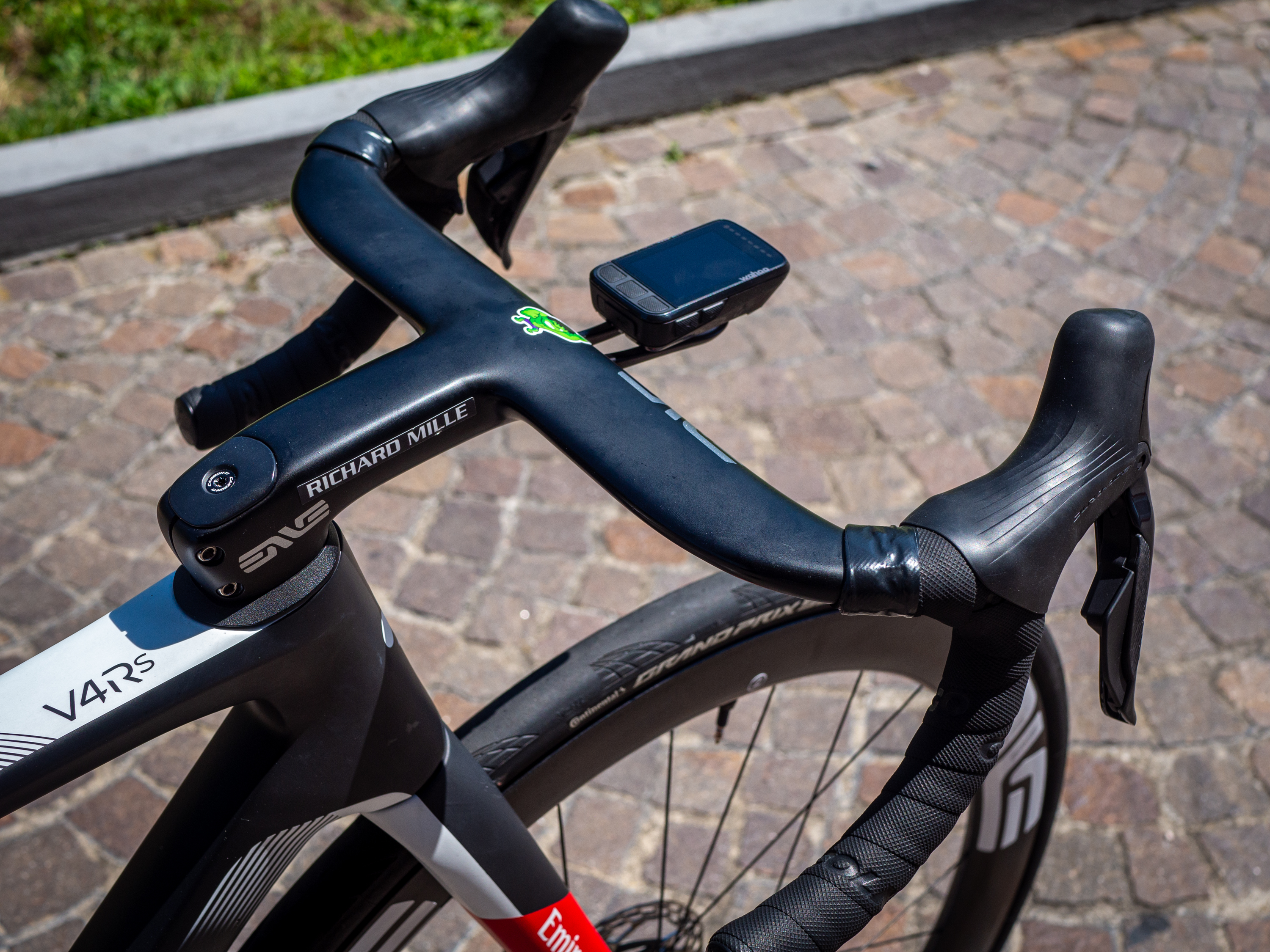
The use of flared bars means that riders can capitalise on the aerodynamic benefits of a narrow riding position on the hoods whilst not compromising on control when riding on the drops.
Nibali’s bike in contrast is a far more traditional design. The separate FSA carbon bar and stem are standard in their profile with the Campagnolo Super Record shifters parallel with one another.
It is a small development but signifies just how all-consuming the hunt for aerodynamic gains has become in the pro peloton.
On the surface, bike weight hasn't changed
If you were to weigh Nibali’s SL5 and Vingegaard's R5 you’d find that both come in pretty much at the UCI’s minimum weight limit of 6.8 kilos. On the surface, this would make it look like there has been no development in total bike weights and that would partly be true.
Since the UCI looks to be sitting firm on the 6.8kg limit, there is very little in the way of incentives for bike manufacturers to look at dropping the weight of pro bikes below this limit.
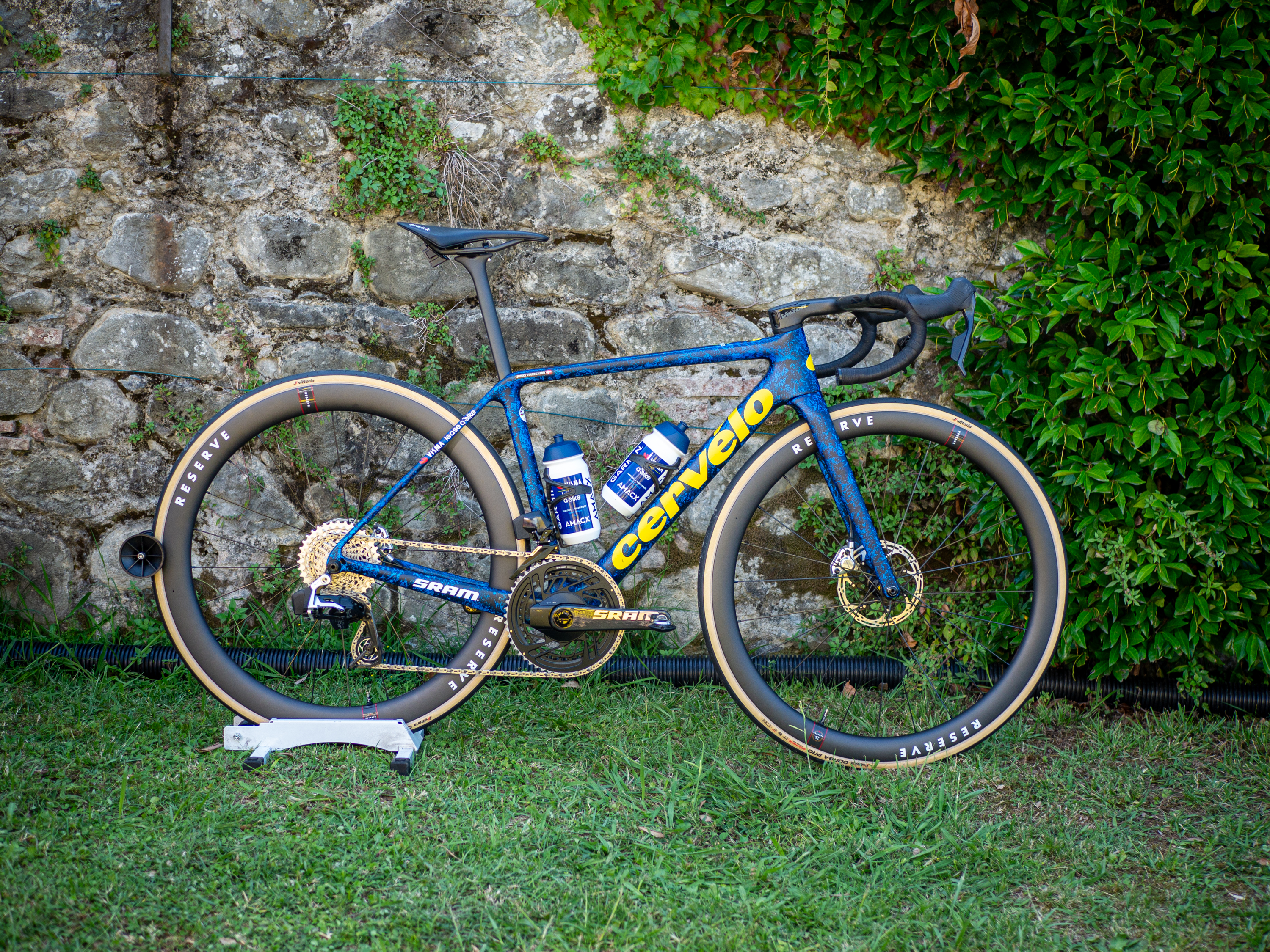
If you look at the development of modern race bikes though between 2014 and 2024 the biggest thing to have changed is the move from rim brakes to disc brakes. This switch immediately added a few hundred grams to a bike with the frame needing to be reinforced at the mounting points to deal with the asymmetric forces of braking. The hydraulic reservoir, rotor and calliper all added significant weight over a traditional rim brake design too.
Between 2014 and 2024 disc brake bikes ballooned in weight with most bikes heading north of 8.5kg. Gradually though, from their widespread uptake in 2018, disc brake bikes have been on a diet with the total weights falling year on year, although not all pro bikes come in under 7kg they are the lightest they have been in the aero-optimised disc brake era.
Get unlimited access to all of our coverage of the Tour de France - including breaking news and analysis reported by our journalists on the ground from every stage of the race as it happens and more. Find out more.







